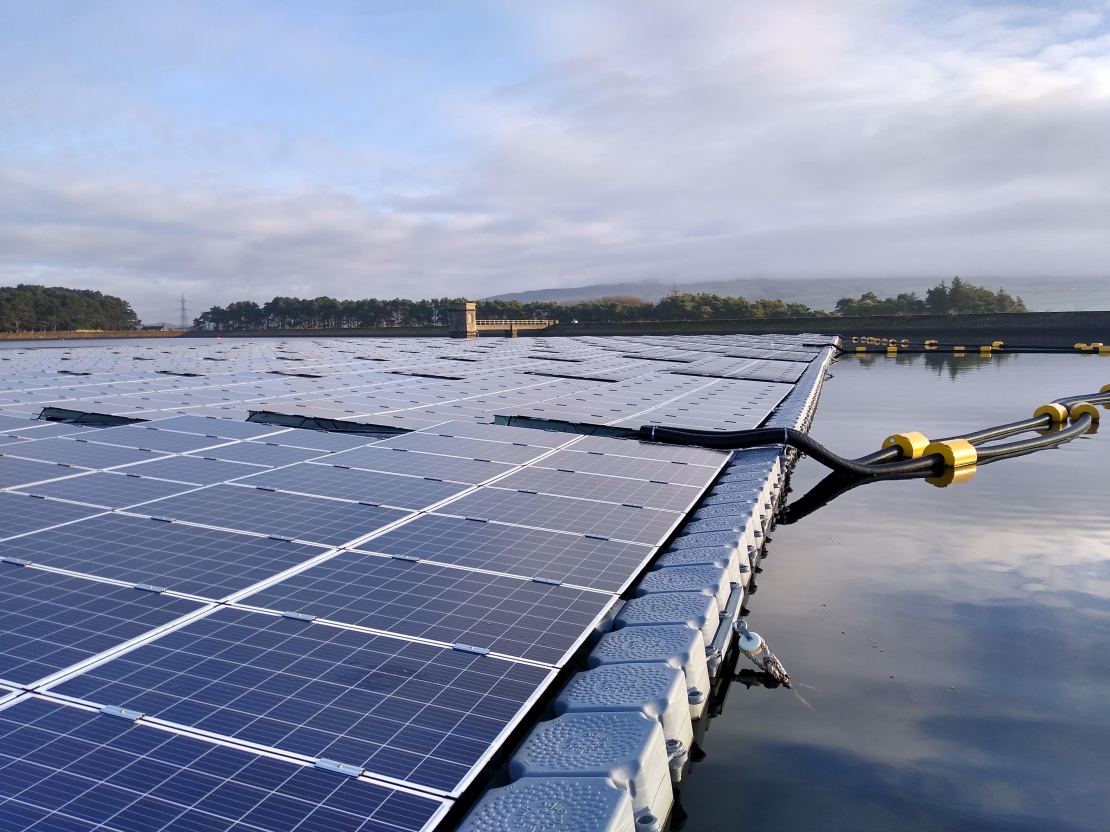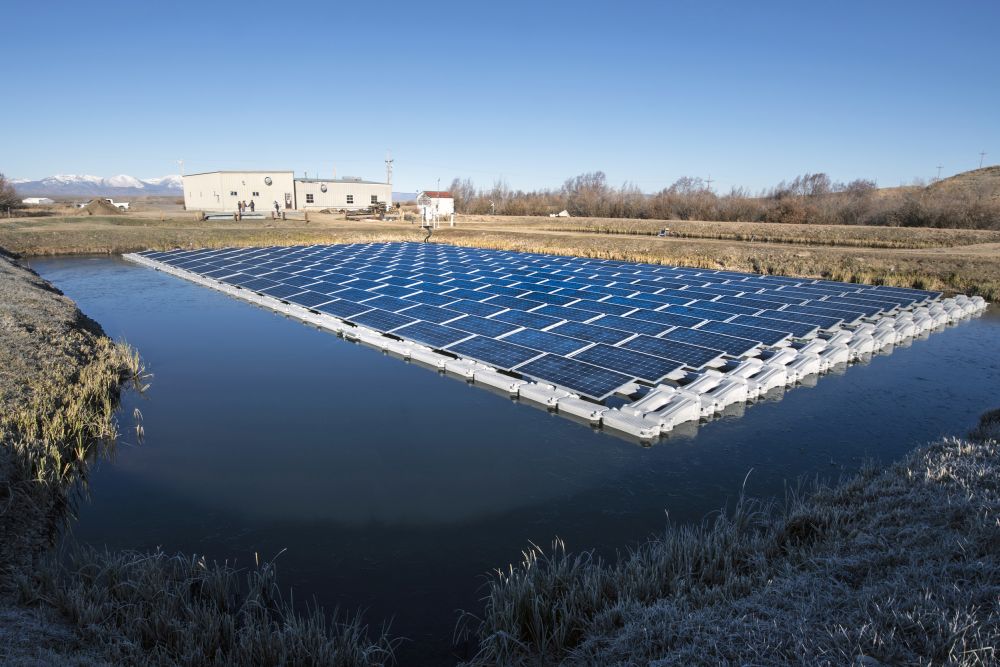Floating Solar Farms to Cool Lakes amid Global Warming
Solar power is the cheapest source of electric power in the history of mankind but the lack of space becomes a limitation. Unlike fossil fuel power plants, solar energy plants require more space to generate electricity for the demand. However, floating solar farms present a viable solution, while helping the lakes remain cool amid global warming.
The floating solar panels on the lake might seem like a dangerous setup, but studies suggest that this method generates more electricity compared to ground-mounted solar power farms. The cooling effects of the water beneath the panels can help boost the efficiency of the system by 12.5% while keeping the lakes cool.

Floating solar farms to cool lakes amid warming temperatures across the world | Image: Giles Exley/The Conversation
The freshwater bodies cover up less than 1% of the Earth’s surface that provides drinking water and crop irrigation. Climate change has increased the surface temperatures of the lakes worldwide, with 0.34 degrees Celsius every decade since 1985. It has led to algal blooms, lower water levels, and carbonized water.
Floating solar farms have grown by almost a hundred times in the past five years, with 2.6 gigawatts of installed capacity in 25 countries. If only 1% of the surface area of human-made water bodies was covered by floating solar panels, it would have a capacity to generate 400 gigawatts – enough to power up 44 billion LED lights in a year!
In the new research, it was found that a carefully designed solar farm can reduce the threat posed by climate change to the water reservoirs.
Computer models have been used to simulate how the floating solar farms are likely to affect the lake temperatures. These simulators are based on Windermere, which is the largest lake in England and one of the well-studied lakes on the earth.
It was found that the floating solar farms control the wind and sunlight that reaches the lake’s surface, impacting the process beneath the water surface. Every floating solar farm was tested to observe the changes in the lake’s temperature with over 10,000 unique combinations of wind speed and sunlight.

The floating solar farms can control the wind and sunlight that reaches the lakes, helping the water bodies remain cool | Image: NBC News
The results suggest that the impact of floating solar farms on water temperatures can be as big as climate change itself, but in the opposite direction.
A floating solar farm can reduce the wind speed and solar radiation by 10% across the lake, undoing a decade of warming from climate change. The designs that provide more shade in the water, have the greatest cooling effect. These effects vary greatly depending on the lake’s depth, surface area and location.
Even though the simulation indicates a win-win for the lakes, there are some undesirable side effects of floating solar farms. In some simulations, it was found that it reduced wind more than sunlight, amplifying the effects of climate change. These risks can be controlled with a carefully designed floating solar farm. This is just the beginning of understanding the potential of this technology.
Via: The Conversation


